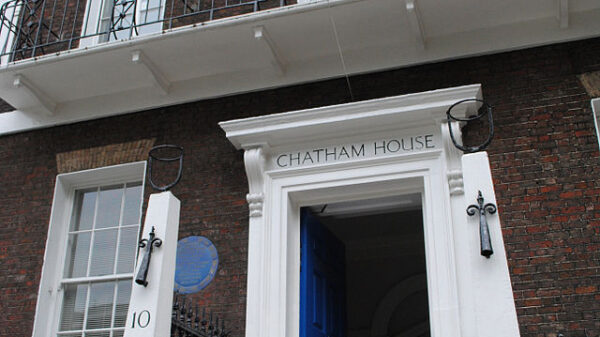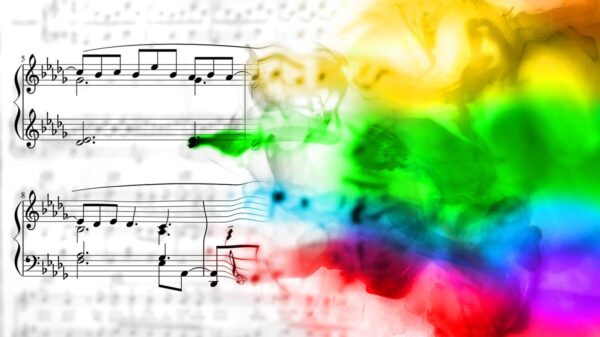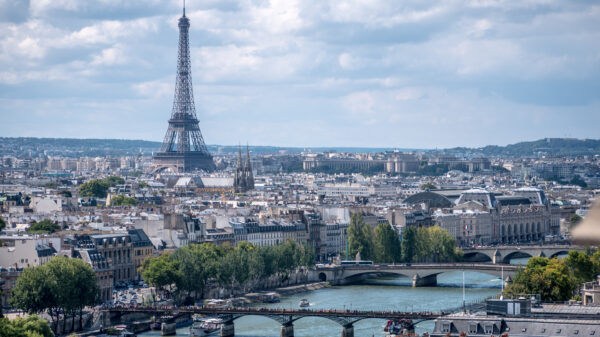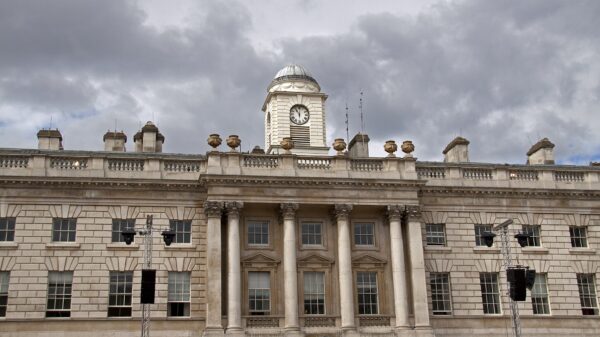Staff Writer Mohana Mitra examines the successes and unanswered questions of ‘Interview with a Vampire’ Part II.
(This article contains spoilers)
Immortality beats a heavy drum in Anne Rice’s ‘Interview with the Vampire’ Part 2. Picking up after the season finale of Part 1, Part 2 continues to adapt the first book of the Vampire Chronicles by Anne Rice. As mentioned in ROAR’s review of Part 1, the story revolves around the vampire Louis narrating his life story to the journalist Molloy. He reminisces about Lestat and Claudia – his maker and his adopted daughter as he traces his life to the present-day.
The second season comes as a much-needed watch for the “rabid and beautifully unwell fandom” starved for queer horror—many fans having waited almost a decade for another season of NBC’s ‘Hannibal’. It stands precariously balanced between outright theatricality and a commercial TV soap. Combining typical gothic horror tropes with the exhilaration of a flirtatious courtship, it once again carves out a space for itself at the intersection of race, sexuality and abuse.

The show picks up from Part one, in which vampires Louis and Claudia, fed up with Lestat, their respective partner and father, slit his throat and leave him for dead. Uprooted from New Orleans, the attempted murderers embark upon a transatlantic voyage. They set off in search for a benevolent vampire in the midst of the Second World War, conveniently ignoring the atrocities taking place around them. The two are seen navigating a war-torn Europe, struggling to make headway on account of their race, raising questions among soldiers and the locals. With the death of Hitler and the end of the war, the two end up in Paris, after multiple failed attempts to locate vampires of their kind.
In Paris, they run into the local coven of vampires, working under the guise of actors at the ‘Theatre des Vampires’, led by the vampire Armand. Claudia is enthralled by the sight of the plays, skillfully written to lure the audience into a false sense of security. Overjoyed at having found more vampires of their kind, she ends up joining the coven. Meanwhile, Louis settles into Paris as the memories of Lestat continue to haunt him, threatening to disrupt his romance with Armand. However, all hell breaks loose when Santiago, the leading man of the ‘Theatre des Vampires’, plots to reveal the attempted murder of Lestat by Louis and Claudia. The last two episodes of the season determine their fates as betrayal, love and grief threatens to drastically tear down their lives.
Romantic or problematic?
Louis continues his musings about the nature of evil as he converses with Armand in a Parisian café. They argue that evil has no gradations and that it takes a single sin to be “evil”. The show hurriedly portrays their courtship, confusing the audience about their attraction to each other. Louis seems to crave the chaos that was Lestat, while also seeking control over Armand in their relationship. However, Armand’s illusion of surrendering to Louis leads to him viewing Armand as “boring” and “beige”.
Armand’s insistence on pleasing Louis apparently hints at past insecurities stemming from prior abandonment. In my eyes, his past as a forced sex worker and Louis’ former role as a brothel owner enhances this unsettling dynamic. However, Armand’s urge to control everything seeps through as he manipulates Louis throughout their relationship. This also leads to an outburst when he feels Louis’ affections for him fading, and we get to see Armand behind his demure mask.
Their present-day penthouse in Dubai lacks any signs of domestic bliss, with them exchanging polite niceties before bed, leading to an entirely awkward dynamic after 77 years of being together. The audience would be remiss not to question if Louis is actually in love with Armand, or if he finds their relationship purely convenient. The last episode throws light on this as the climax further complicates the various romantic, rhetorical and other metaphysical questions that arise throughout the length of the show.
Anne Rice’s characters come to life in the hands of an extraordinary cast
Jacob Anderson (Game of Thrones) is a consistent and heartbreaking Louis, struggling to maintain his current relationship while battling the hallucinations of his last one. Delainey Hayles (Too Close) as Claudia is a welcome addition into the stellar cast, her unique vulnerability and emotional maturity throws Claudia’s growth into sharp relief. Assad Zaman (Apple Tree Yard) shines as Armand, enjoying significantly more screentime in S2 compared to S1. Zaman masterfully and subtly plays out Armand’s complex mix of insecurity and demand for control, as well as the impact of childhood abuse on his character.
However, at times, viewers sorely miss Sam Reid (Belle) in the role of the unpredictable and flamboyant Lestat due to his reduced screentime. I, and other viewers, felt the lack of the much-needed strains of humor that he brought to the show. The long-awaited season finale, introducing Lestat outside memories, does justice to the powerhouse of acting that is Sam Reid.
Changing the original: Hit or a miss?
In ‘Interview with the Vampire’ Part II, the stakes are visibly higher, both in terms of the plot and the production. An entire coven, each with a unique and well-developed outlook and motive, has now joined the three vampires of Part 1. Once again, the showrunner (Rolin Jones) proves his aptitude at taking risks, as all of the major changes from Anne Rice’s books seem to pay off.
The character of Louis, originally a white plantation owner in 1791 New Orleans, had been replaced by a black brothel-owner in the 1900s, in Part 1. The character of the vampire Armand, canonically a Ukrainian man from the 1400s has now been altered to be a man from Delhi in the 1500s.
These major changes to the characters bring into play a unique power dynamic. Claudia herself says to Louis, “Fourteen hapless vampires being led by a vampire with skin darker than yours,” referring to the refreshing reversal of roles at the Theatre des Vampires. However, it also makes us question the political imperatives behind the decision to change the original story in order to present us with a brown character with a past of endured sexual abuse and slavery, especially with little regard for what India in the 1500s was like.
The casting choice has triggered accusations of “diversity casting” and “wokeness” amidst the fandom. Meanwhile, some fans argue it was necessary for the story to keep in line with the altered timeline while keeping the character’s motives believable and unchanged. However, the show’s handling of race and its implications urges us to give them the benefit of the doubt: Part Three promises to explore Armand’s character yet further.
Homoeroticism in gothic media
During the original casting for the 1994 film, Anne Rice had reason to believe that the homophobia in Hollywood at that time would simply not have allowed for the two male leads to have an intimate relationship. This nearly led to the character of Louis adapted to be female and the role going to an actress, namely Cher.
The 2022 AMC ‘Interview with the Vampire’ Part 1 was the first adaptation of the book that was able to turn the homoerotic subtext to actual text, by explicitly making Louis and Lestat a couple. Part 2’s decision to take it up a notch, by further complicating the dynamic between the big three – Louis, Lestat and Armand, also pays off as the romantic history between Lestat and Armand is revealed when Louis and Armand begin their forbidden romance in Paris. Armand’s distaste for Lestat gains more context in this version, as does Armand’s insecure attachment to Louis.
This season offers up a potentially alternate narrative for some of the events in Part 1, as we realize that Louis is an extremely unreliable narrator, blissfully unaware of years of lost memories and of reconstructed ones. This prompts the audience to question the degree to which Louis is as much a victim as he portrayed himself to be at the hands of Lestat. The season finale leaves us with a longing to see Lestat’s side of things as the storyline of the book ‘Interview with the Vampire’ finally comes to an end. However, it leaves us with an open ending, and a strong wish, for Lestat to take the lead in Part 3 of ‘Interview with the Vampire’.











